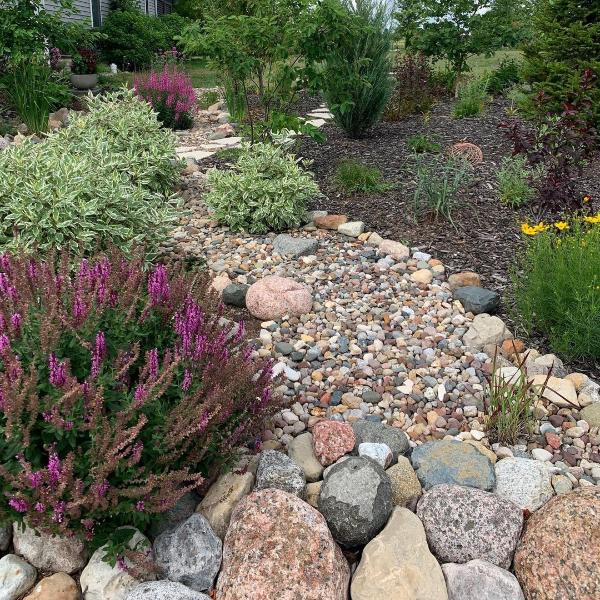Not known Facts About Hilton Head Landscapes
Not known Facts About Hilton Head Landscapes
Blog Article
More About Hilton Head Landscapes
Table of ContentsThe smart Trick of Hilton Head Landscapes That Nobody is Talking AboutEverything about Hilton Head LandscapesThe 8-Second Trick For Hilton Head LandscapesGetting My Hilton Head Landscapes To WorkHilton Head Landscapes Can Be Fun For EveryoneThe Hilton Head Landscapes DiariesAll About Hilton Head Landscapes
Line produces all forms and patterns and can be utilized in a variety of methods the landscape. Line in the landscape is produced by the edge between 2 products, the outline or shape of a kind, or a lengthy direct feature. Lines are a powerful device for the developer since they can be made use of to develop a limitless range of shapes and forms, and they regulate motion of the eye and the body.

Lines can have one or more characteristics, such as those described below, but they generally serve various objectives. Number 1. Lines in the landscape - hilton head landscapers. The residential or commercial properties of lines determine just how people reply to the landscape, both psychologically and literally. Straight lines are structural and forceful; they produce a formal personality, are typically connected with a symmetrical layout, and lead the eye directly to a focal factor.
Facts About Hilton Head Landscapes Uncovered
Straight lines are most typically located in hardscape edges and product. Curved lines develop a casual, natural, loosened up character that is connected more with nature and unbalanced equilibrium. Rounded lines relocate the eye at a slower rate and add secret to the room by creating concealed sights. Upright lines move the eye up, making a room really feel larger.
Vertical lines in the landscape include tall, narrow plant material, such as trees, or tall frameworks, such as an arbor or a bird residence on a post. Straight lines relocate the eye along the ground airplane and can make an area really feel bigger. Reduced lines are more controlled and produce a feeling of remainder or repose.
Hilton Head Landscapes Things To Know Before You Get This
Low lines are created by low yard wall surfaces, pathways, and short bushes. Lines are utilized to draw forms on a strategy. In strategy sight, they specify plant beds and hardscape locations. Lines are likewise produced by the vertical kinds of built functions and plant material. There are three key line types that produce kind in the landscape: bedlines, hardscape lines, and plant lines.
Bedlines link plant material to your home and hardscape because the eye complies with the line, relocating the look through the landscape. Hardscape lines are produced by the edge of the hardscape, which delineates the constructed structure. Line can likewise be created by long and slim materials, such as a fence or wall.
Unknown Facts About Hilton Head Landscapes
Type is located in both hardscape and plants, and it is usually the dominant aesthetic component that spatially organizes the landscape and frequently figures out the design of the yard. The form of structures, plant beds, and garden ornaments likewise figures out the general kind motif of the yard. Formal, geometric forms consist of circles, squares, and polygons.
Plants produce type in the yard with their lays out or silhouettes, yet kind can additionally be specified by a gap or negative space between plants - bluffton landscaping (https://4vgontca9bh.typeform.com/to/NcH3QMx6). Circles can be cycles, or they can be divided right into fifty percent circles or circle sectors and incorporated with lines to develop arcs and tangents
Unknown Facts About Hilton Head Landscapes
Circles can also be extended right into ovals and ellipses for more selection and passion. Circles are a strong design kind since the eye is constantly attracted to the center, which can be made use of to highlight a centerpiece or attach other kinds. Figure 2. Round types in hardscape and grass panels.
The square kind can also be fractional and used continuously to produce a grid pattern. Unlike circles, squares are more powerful on the sides, which can be lined up or overlapped to create special patterns and even more complex types.
Twisting lines commonly imitate the all-natural course of rivers or streams and can be called smooth lines with deeply rounded wavinesses. Meandering lines (Figure 3) work well for paths, plant bedlines, and completely dry stream beds. Twisting lines can add interest and secret to a yard by leading customers around edges to uncover new views and rooms.
Everything about Hilton Head Landscapes

Figure 5. Fragmented edges: stepping stones in pathway. Form is the most enduring quality of a plant (landscaping hilton head sc). https://www.edocr.com/v/n3mz8xkl/stevenagonzales/hilton-head-landscapes. Usual plant types are well established and standard, as site link form is the most constant and identifiable attribute of plants. Kind can likewise be developed through the massing of plants, where the total mass develops a various type than a specific plant.
A very contrasting form should be used with careone or more job well as a focal factor, however way too many wreak havoc. Natural plant types, as opposed to over-trimmed forms, should develop the mass of the structure. The significance of total type is essentially depending on the seeing perspectivethe form of a tree can show up quite various to a person standing under the cover versus seeing the tree from a distance in an open field.
A Biased View of Hilton Head Landscapes
Plant types additionally create and define the space or open rooms in between the plants, developing either convex or concave types in the voids. High-arching tree branches typically produce a concave open area under the branches, and a rounded canopy with low branches fills up the room to develop a convex kind outdoors space under the tree.

Report this page